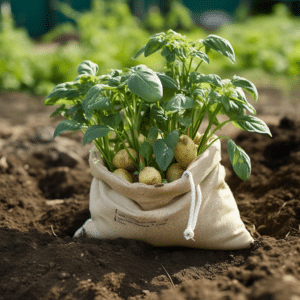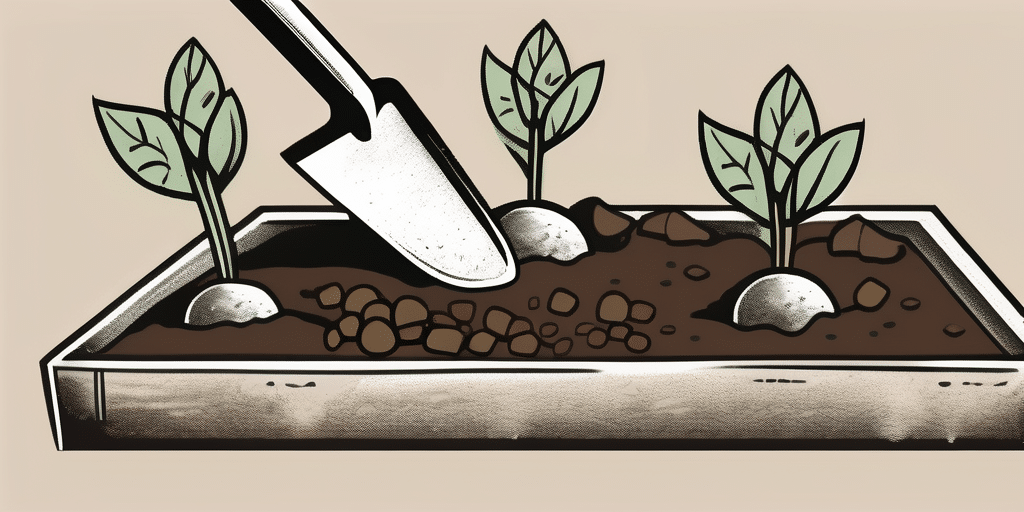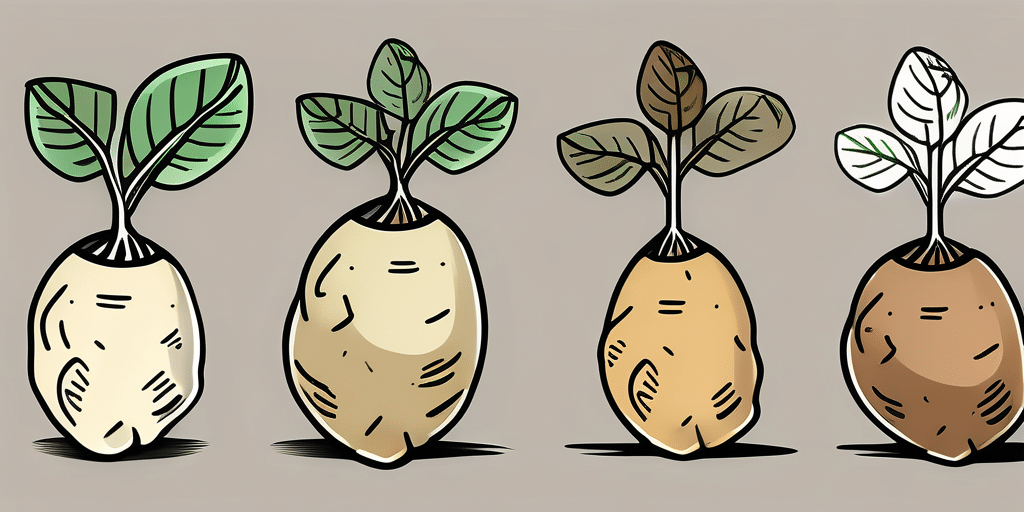Planting potatoes in bags is a convenient and space-saving way to grow your own delicious spuds. Whether you have limited garden space or simply want to try something different, this step-by-step guide will walk you through the process of successfully planting potatoes in bags. From understanding the basics of potato planting to caring for your potato plants, we’ve got you covered.
Understanding the Basics of Potato Planting

Before diving into the details of bag planting, it’s essential to have a basic understanding of how potatoes grow. Potatoes belong to the nightshade family and are starchy tubers that develop underground. The process begins with seed potatoes, which are potatoes saved specifically for planting. When these seed potatoes are planted, they grow into new potato plants through a process called chitting.
Chitting is a crucial step in the life cycle of a potato plant. It involves placing the seed potatoes in a cool, well-lit area to encourage the growth of sprouts. These sprouts, also known as chits, emerge from the eyes of the potato. Chitting helps to jumpstart the growth process and ensures that the potato plants have a head start when they are eventually planted in the soil.
Once the chits have emerged and are around 1-2 inches long, the seed potatoes are ready for planting. It is important to choose healthy seed potatoes with no signs of disease or rot. Planting them in well-drained soil with good fertility is essential for their growth and development.
The Life Cycle of a Potato Plant
The life cycle of a potato plant consists of several stages. It starts with chitting, during which the seed potatoes are placed in a cool, well-lit area to encourage the growth of sprouts. Once these sprouts emerge, they are ready for planting. As the potato plants grow, they develop foliage and eventually produce flowers. The flowers are followed by the formation of tubers, which are the edible part of the plant that we harvest and enjoy.
The foliage of potato plants plays a vital role in the growth process. The leaves capture sunlight and convert it into energy through photosynthesis. This energy is then used by the plant to produce carbohydrates, which are stored in the tubers. The more foliage a potato plant has, the more energy it can produce, resulting in larger and more abundant tubers.
After the foliage has developed, potato plants enter the flowering stage. The flowers are typically white or purple in color and are a beautiful sight to behold. While the flowers themselves are not edible, they serve as an indicator that the plant is progressing through its life cycle.
Following the flowering stage, the potato plant begins to form tubers. These tubers develop underground and vary in size and shape depending on the potato variety. They are the part of the plant that we harvest and enjoy as food. The tubers continue to grow and mature until they are ready for harvest, usually around 70-120 days after planting, depending on the variety and growing conditions.
Why Choose Bag Planting for Potatoes?
Bag planting offers numerous benefits for growing potatoes. One major advantage is that it allows you to grow potatoes in a small space such as a balcony, patio, or even indoors. This is particularly beneficial for urban gardeners or those with limited gardening space. By using bags, you can maximize your potato yield without the need for a large garden.
In addition to space-saving benefits, bag planting provides excellent drainage for potato plants. The bags are typically made of breathable material that allows excess water to drain out, preventing waterlogged soil. This is crucial because potatoes require well-drained soil to thrive. Waterlogged soil can lead to root rot and other diseases that can harm the plants.
Another advantage of bag planting is that it simplifies the process of controlling weeds. When growing potatoes in the ground, weeds can quickly take over and compete with the potato plants for nutrients and water. However, when using bags, it is easier to keep the area weed-free. The confined space makes it easier to spot and remove any weeds that may emerge.
Bag planting also allows for better monitoring and management of pests. By keeping the potato plants in bags, you can easily inspect them for any signs of insect damage or disease. If pests are detected, you can take immediate action to prevent further infestation and protect your potato crop.
Moreover, bag planting simplifies the process of harvesting. When growing potatoes in the ground, harvesting involves digging up the plants, which can be labor-intensive and time-consuming. However, with bag planting, all you need to do is empty the bags to harvest your potatoes. This makes the harvesting process much more convenient and saves you from the back-breaking work of digging.
In conclusion, bag planting offers a convenient and space-saving method for growing potatoes. It provides excellent drainage, simplifies weed control, allows for better pest management, and makes harvesting a breeze. Whether you have a small balcony or a large garden, bag planting is a practical and efficient way to enjoy a bountiful potato harvest.
Gathering Your Potato Planting Supplies

Before getting started with bag planting, it’s important to gather all the necessary supplies. By having everything ready, you can ensure a smooth planting process.
Choosing the Right Potato Varieties
The first step in gathering supplies is selecting the right potato varieties to plant. Certain potato varieties are better suited for bag planting due to their size and growth characteristics. Look for varieties that are labeled as suitable for container or bag planting. These varieties often produce more compact plants and tend to have a shorter growing season.
Selecting Suitable Planting Bags
Next, you’ll need to choose suitable planting bags. Opt for bags specifically designed for growing potatoes, as they are typically made from a breathable fabric that allows proper airflow. These bags should also be large enough to accommodate the growth of the potato plants and provide ample space for the tubers to develop.
Essential Tools for Potato Planting
Finally, gather the essential tools for potato planting. You’ll need a garden trowel or shovel for filling the bags with soil, a sharp knife for cutting the seed potatoes, and a watering can or hose for irrigation.
Preparing Your Potatoes for Planting
Once you have all your supplies ready, it’s time to prepare your potatoes for planting. Proper preparation ensures that your potatoes have the best chance of thriving in the bags.
The Importance of Chitting
Before planting, chitting the seed potatoes is crucial to promote sprout growth. To chit your potatoes, place them in a cool, well-lit area with the eyes facing upwards. The eyes are the small depressions on the surface of the potato from which sprouts emerge. Allow the potatoes to chit for a few weeks until sprouts about 1 inch long have developed.
Cutting Potatoes for Planting
Once the potatoes have chitted, it’s time to cut them into smaller pieces for planting. Each piece should have at least one or two sprouts. Use a clean, sharp knife to cut the potatoes, ensuring that each piece is approximately 2 inches in size.
The Process of Planting Potatoes in Bags
With your potatoes prepared, it’s time to tackle the actual planting process. Follow these steps to ensure successful bag planting.
Filling Your Bag with Soil
Begin by partially filling the planting bags with a nutrient-rich potting soil. Fill the bags up to about one-third of their capacity. Ensure that the soil is loose and well-draining to prevent waterlogging.
Positioning Your Potatoes
Next, position the seed potatoes on top of the soil surface in the bags. Make sure they are evenly spaced and have the sprouts facing upwards. Space the potatoes approximately 6-8 inches apart from each other to provide sufficient room for growth.
Covering and Watering Your Potatoes
Once the potatoes are in place, cover them with an additional layer of soil. This layer should be about 4-6 inches deep. Gently water the bags until the soil is evenly moist, but not waterlogged. It’s important to maintain consistent moisture throughout the growing season to avoid dry or waterlogged conditions.
Caring for Your Potato Plants

Proper care is essential for healthy potato plants and a bountiful harvest. Here are a few key aspects to consider when caring for your potato plants.
When and How to Water Your Potatoes
Watering is crucial for potato plants, especially during dry periods. Monitor the moisture levels in the bags and water when the top layer of soil feels dry to the touch. Avoid overwatering, as excessive moisture can lead to rot and disease. It’s best to water deeply but infrequently, ensuring that the water reaches the plant’s root zone.
Recognizing and Managing Common Potato Pests
Potato plants are susceptible to various pests that can cause damage to the foliage and tubers. Common pests include potato beetles, aphids, and caterpillars. Regularly inspect your plants for signs of infestation, such as chewed leaves or visible pests. If pests are present, consider using organic pest control methods or consult with a local gardening expert for the best course of action.
By following these step-by-step instructions and providing proper care, you’ll soon enjoy a bountiful harvest of fresh and delicious potatoes. Happy planting!

